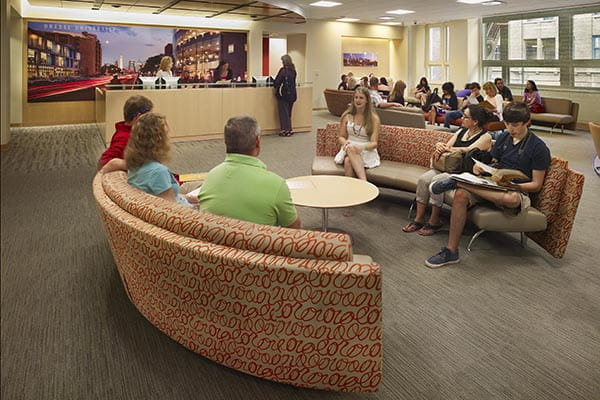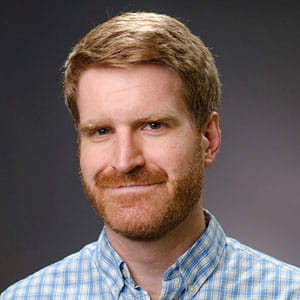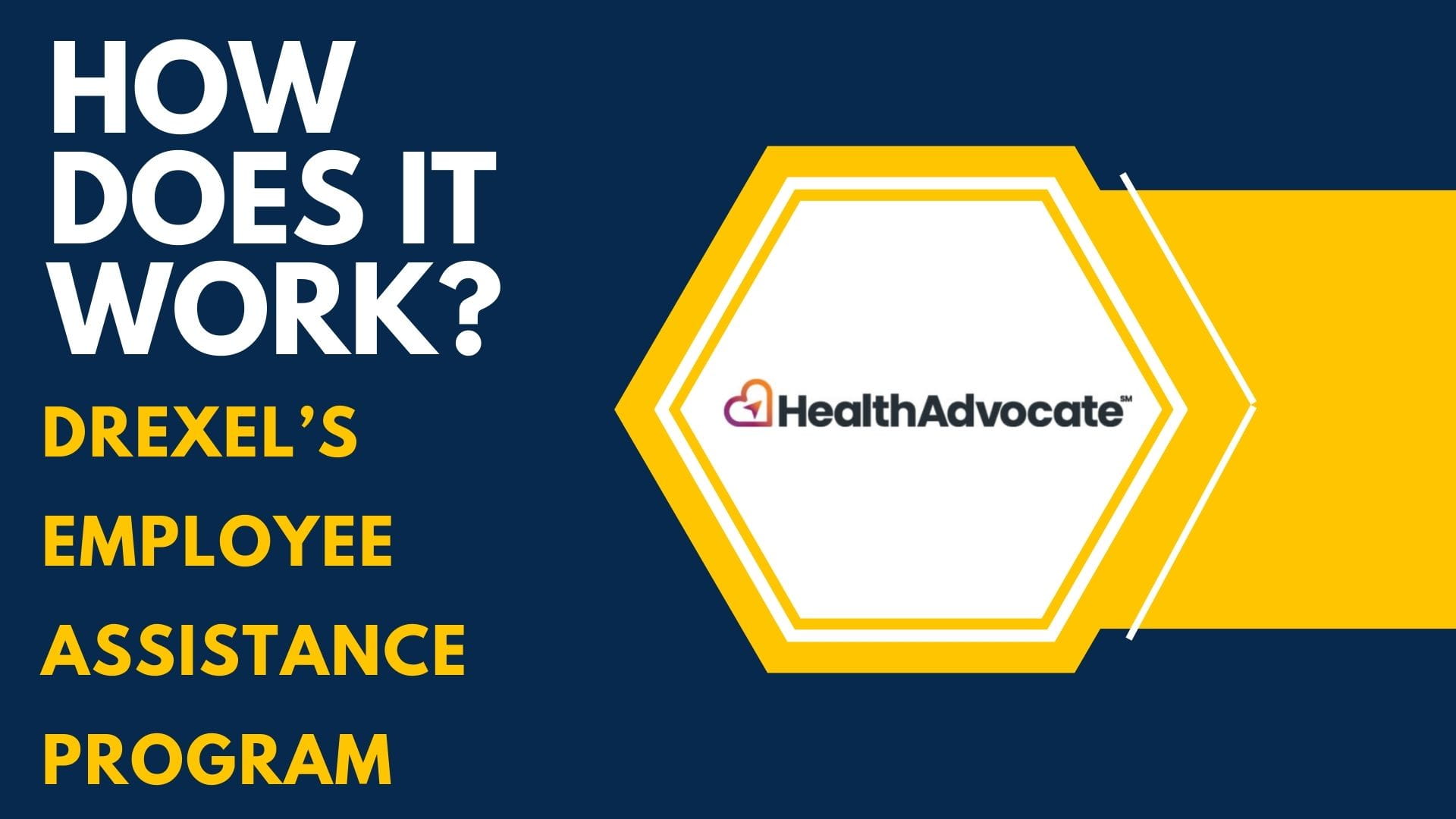Getting the Right Students: Drexel's Student Lifecycle Management Transformation

It’s a funny thing about numbers: Depending on how you look at them, they can tell different stories. And they can all be true.
Take, for example, the enrollment numbers that officials from Huron Consulting Group presented to Drexel’s senior leadership earlier this year.
For years, Drexel’s enrollment strategy was all about volume. For a university with grand ambitions, growth was paramount. That meant recruiting and enrolling as many students in each freshman class as possible. And that strategy had worked: More applications were rolling in, and more students were coming through the doors, than ever before.
But viewed through another lens, the numbers told another story, as well. Though the volume strategy had worked, things might look different in a few years unless Drexel made a shift.
As of 2013, only 9 percent of the undergraduate students admitted to Drexel wound up actually enrolling. Since 2008, Drexel had more than doubled the number of applications it had received — but for every 35 additional applications generated, only one new student came to campus. And once those students did enroll, only 68 percent of them graduated within six years.
Add it all up, and the University was on the road to enrollment troubles, even if the books looked fine for now. Too much time and money was being spent recruiting students who would never sit in a Drexel classroom. And of those students who did come to campus after thousands of dollars were invested to get them there, too many were leaving before they graduated.
“It was glaring how different Drexel was from some of its peers” when it came to such metrics, said Rose Martinelli, a manager for Huron Education who helped present that information to the University’s leaders. Throw in the fact that forecasts projected the number of high-school graduates in the Mid-Atlantic to shrink over the next decade, and it was clear that the volume-based strategy might no longer be the best one.
That meeting was an “aha moment.” Martinelli said. It became clear that for Drexel to thrive into the future, it would need to transform how undergraduates come into, and move through, the University.
About a year later, University leaders and consultants from Huron are deep into an effort to do just that. Known as “Student Lifecycle Management” (SLM), this initiative now involves 10 different committees of faculty and professional staff working to instill a new approach focused on building relationships with students that start years before they come to Drexel and continue through and after graduation.
“Look at the student experience through the eyes of the student and not the eyes of the administrator: That is the fundamental change here,” Martinelli said.
The Numbers
This story started when, back in late 2012, Drexel hired Huron consultants to examine how efficiently the University was operating. What they found were several indicators suggesting that Drexel’s finances and reputation could be in trouble as the years passed without some changes.
Graduation rates were too low, admission rates were too high and yield rates — the percentage of admitted students who enroll — were downright tiny.
Drexel was spending a lot, more than $12 million per year, to attract applications for prospective undergraduates. And it was getting applications in impressive numbers, more than doubling its number of applicants from fewer than 21,500 in 2008 to more than 43,000 in 2013. And that contributed to larger freshman classes: In 2013, nearly 3,100 students enrolled as first-time freshmen, an increase of more than 600 from five years before.
But this “volume-based” approach to enrollment, Martinelli said, was resulting in diminishing returns. Each year Drexel needed to attract more and more applicants to grow its enrollment, and by 2013 its yield was less than 10 percent, down from 17 percent in 2008.
Drexel’s recruitment was focused on filling the mouth of an enrollment funnel with more and more applications each year, hoping at least some of those applications would turn into new students and, in turn, graduates. But it was a pattern that couldn’t be sustained.
“You can’t keep finding 35 new applications for every new student year after year after year,” said Pete Fritz, another manager for Huron Education.
That’s why a key plank of the Student Lifecycle Management effort is to shift from attracting as many applicants as possible to attracting the right applicants. But the right applicant for one Drexel college might not be the same as the right applicant for another.
Having a Voice
As dean of Drexel’s College of Arts and Sciences, Donna Murasko oversees departments ranging from English and Philosophy to Biology. And if there was one common complaint from her faculty about the way their students arrived at Drexel, Murasko said, it was that those students were all admitted by the same criteria, whether they were going to be studying mathematics or history.
“Faculty always had some concerns that the students who were coming to Drexel weren’t the ones who were really best for their particular program,” Murasko said. “They had an impression that we were admitting a generic student.”
And it was true that every Drexel applicant, in general, was judged on the same criteria — largely GPA and SAT scores — regardless of what his or her major would be, or even which college or school he or she would enter. Thanks to Student Lifecycle Management, though, that is no longer the case.
The Division of Enrollment Management — for which Martinelli currently serves as interim leader — now invites Drexel’s colleges and schools to participate in a more holistic admissions process, admitting students based on their own research into what leads to success in their particular discipline. Except in the Westphal College of Media Arts & Design, where students submitted portfolios as part of the admissions process, that was not happening before.
As her college has taken part in that process for the first time this year, Murasko said, her faculty have gotten a bit of a spring in their step.
“Knowing that you have a voice just gives you a reason to be much more invested throughout,” Murasko said.
The new “best-fit” approach will also affect the way Drexel recruits. To really evaluate whether students fit at Drexel, Martinelli said, will require a “relational approach” rather than a “transactional approach” to recruitment. That means reaching out to students from when they first start thinking about college, perhaps as early as seventh or eighth grade, and sending a clear message about what Drexel can offer — namely, experiential learning and the valuable co-op program.
“It’s a much longer recruitment cycle where we actually try to create a relationship with a student early on,” Martinelli said.
That’s hard to do when the aim is to draw as many applications as possible, though, so it may mean that the total number of applicants falls back below 40,000, rather than continuing its rapid rise. But that smaller number of applicants should have a greater interest in the University, allowing for freshman class sizes to remain stable.
The new approach also means sometimes looking beyond the numbers when it comes to admissions.
For example, one special case this year drew the attention of Enrollment Management leadership, Martinelli said. This applicant might not have been admitted if the decision were based solely on grades or test scores. But he had a background that indicated those numbers didn’t tell the whole story: His mother was undergoing cancer treatment while he was in high school, forcing a temporary transfer elsewhere in the country.
“You go, ‘My gosh, this is a great kid who’s doing fairly well in a challenging circumstance,’” Martinelli said.
And now he’ll have the opportunity to do well at Drexel, if he chooses to come: He was admitted in December.
Meeting Needs
Of course, Drexel’s future does not just depend on getting students in the door. There’s also the matter of ensuring they succeed.
One of the troubling metrics cited by the consultants was Drexel’s six-year graduation rate, which sits at 68 percent. President John Fry has said that number should rise to at least 80 percent.
Many students who don’t remain at Drexel through graduation, Huron found, have a mixture of academic and financial issues. That, Martinelli explained, can be partly attributed to the way Drexel has awarded financial aid.
Drexel’s aid has generally correlated more with students’ academic ability than their financial need. That means that less well-prepared students tended to be the ones getting less aid and taking out large amounts of loans. And when those problems eventually pile up, those students would sometimes end up leaving Drexel with no degree and a pile of debt.
“It’s hard for them to go anyplace else after that point,” Martinelli said. Drexel, meanwhile, would be left with an empty spot in that student’s class, missing out on future tuition revenue. “Once you lose those students, you can never recoup those same dollars,” she added.
That’s why Drexel’s new aid philosophy will shift to focus more aid on meeting students’ need, aiming for all students who enroll to be financially equipped to succeed at the University. The plan is to provide students with grants totaling a certain percentage of their need — possibly 40 percent to begin, with increasing percentages in the future boosted by fundraising — after family contributions, government aid and other factors are included. Merit aid will also continue, in an attempt to attract top students.
The new aid philosophy could also help attract a student body that’s easier to teach. The past practice has been to award a good deal of aid to strong students who apply early, then award other aid to students who were initially placed on a waitlist in an attempt to shore up enrollment numbers. This has resulted in a “bimodal” distribution of students, Martinelli said: One group that’s well-prepared for Drexel’s rigor, and one that’s less prepared.
“You’re almost, in a way, trying to teach two different classes at the same time,” Fritz said.
The new strategy should change the distribution so that more students are in the middle of the academic spectrum, allowing for more effective teaching.
In addition, a new advising infrastructure will aim to help students succeed after they’ve enrolled and figured out finances, said Adam Fontecchio, associate dean for academic affairs in the College of Engineering. Just as the new one-stop student service shop Drexel Central has helped eliminate service barriers, new advising technology will help different University offices to record and share information about students to provide more coordinated help.
And now that colleges and schools are taking part in the admissions process, they can study what characteristics in incoming students tend to lead to success in different programs — and anticipate which students might need additional support.
A Continued Rise
All these changes won’t go into place at once; they’ll take some three to five years to implement. But added together, Martinelli said, she believes all these changes will shore up the University’s finances through increased retention and graduation rates, improve metrics that contribute to Drexel’s reputation and even change the way prospective students think about the University. And fewer students would apply to Drexel as a backup option.
“We need to change the conversation,” Martinelli said. “We’re not a safety school. We’re a chosen school.”
By proactively making these changes before finding itself in a crisis, she said, Drexel can ensure it continues its two-decade-long ascent.
And the timing may be perfect for this shift, Murasko said. Before now, Drexel needed to focus on recruiting by volume in order to grow. But the University has now made enough of a name for itself that it no longer needs every applicant it can get, she said. Now, it’s time to find the right ones.
“Drexel has gotten to a stage in its development where we should focus on the students who really will benefit from the philosophy of Drexel,” Murasko said, “which is experiential learning and the thought of taking their skills and using them entrepreneurially in the future.”
Who’s Making it Happen
Drexel’s Student Lifecycle Management initiative is wide-ranging, covering many parts of the University. So helping with the effort have been 10 different committees made up of professional staff and faculty, each tasked with planning and executing a different piece of Drexel’s student-life evolution.
Here’s a breakdown:
Student Lifecycle Management Governance Committee
Co-chairs: Helen Bowman, senior vice president for finance, treasurer and chief financial officer; Joan McDonald, senior vice president for enrollment management (now retired)
Mission: The governance committee is the overarching group working to make the Student Lifecycle Management evolution happen, incorporating members from a variety of University offices.
Selection Redesign Committee
Co-chairs: Erin Finn, assistant vice president for admissions; Elaine Varas, senior executive director, Student Financial Aid office
Mission: Its charge is to modify the way the University admits undergraduates, with the goal of improving retention, acceptance and yield rates. It’s already implementing some changes for 2014, including a great involvement for colleges and schools in selecting students likely to succeed in their majors.
Advising Task Force
Co-chairs: Peter Franks, vice provost for career education; Antoinette Torres, associate vice provost for academic advising, retention and diversity
Mission: This group is charged with developing recommendations for enhancing student advising, with an eye on improving student satisfaction, success and retention and graduation rates.
Advising Technology Committee
Co-chairs: Jan Biros, vice provost for budget, planning and administration; Adam Fontecchio, associate dean for academic affairs, College of Engineering
Mission: For about the past six months, this panel has worked to put in place a new system that better shares advising information from different offices. For example, an adviser from a student’s college can share notes with advisers at Drexel Central. The committee’s next task will be to integrate different information systems used around the university.
Integrated Marketing and Communications Committee
Co-chairs: Jim Katsaounis, associate vice president for university communications; Casey Turner, assistant vice president for recruitment
Mission: This group is working to help Drexel better tell its story and convey its unique features to prospective students and the general public — not just at the University-wide level, but at the level of individual colleges and schools, as well. The committee revised the University's key messages and invited communicators from throughout Drexel to a storytelling training event, and it is now working with staff from different colleges, schools and departments to develop their own messages and identify stories to tell.
Annual Bill Communications Committee
Chair: Lori Doyle, senior vice president for university communications
Mission: Drexel will shift from annual to quarterly billing starting in fall 2014, after students and their parents expressed confusion and dissatisfaction about the annual system. This committee is working to develop a strategy to communicate that change to students, parents and others around Drexel.
EM-NTR Model Committee
Co-chairs: Nicole Verretti, associate vice president for financial planning; Rob Mirabile, assistant vice president for enrollment analytics
Mission: The acronym stands for “enrollment and net tuition revenue.” This group is working to create a model that can project how different strategies for enrollment and financial aid would affect enrollment, tuition revenue and characteristics of incoming freshman classes such as socioeconomic factors, SAT scores and diversity.
Orientation Sub-committee
Co-chairs: John Cooke, associate dean of students for student affairs; Melanie Kraus, assistant director, Steinbright Career Development Center
Mission: Under the larger umbrella of the Advising Task Force, this group will set goals for recruitment and orientation events, as well as the UNIV 101 seminar class, with the aim of increasing enrollment yield and student retention for new undergraduate students.
Registration Task Force
Co-chairs: Alisa Abadinsky, assistant vice president for student financial and registration services; Jan Biros, vice provost for budget, planning and administration
Mission: This task force will consider possible improvements to the way students move through enrollment and course registration. Goals are to ensure the proper time to degree, improve students’ satisfaction and retention and a smoother workflow among offices and staff.
Academic Capacity Committee
Co-chairs: Joan McDonald, senior vice president for enrollment management (now retired); Donna Murasko, dean, College of Arts and Sciences
Mission: This committee, which is now finished meeting, considered recommendations from Huron Consulting Group about recruiting students likely to succeed at Drexel and improving retention.
In This Article
Drexel News is produced by
University Marketing and Communications.

